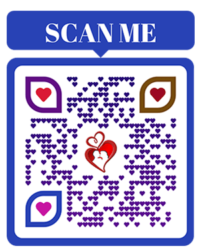Liars can be the hair in your biscuit.
Lying has been one of the most hated behaviors. Yet, most people lie.
The average American tells about 11 lies per week. And 60% of people can’t go 10 minutes without lying at least once. In fact, those that did lie told an average of three lies during a short conversation.
But why do people lie?
Well, one study finds that 37% of people who reported lying did so “to protect themselves in some way; mostly to avoid shame or embarrassment, to avoid painful emotions and to avoid being judged.”
Whatever the reason, lies hurt. It doesn’t just destroy reputation, it ruins your relationships. It can lead to the collapse of business like in the case of Enron. We don’t just despise being lied to; we also despise having anything to do with a liar.
So, how do you know you’re not being lied to if someone is sitting across the table from you? What signals do you look for to know if someone isn’t being truthful?
It turns out that you and I both have a built-in system for detecting deception. We have pre-coded instincts to identify lies, according to a study. However, our conscious minds frequently override this instinct, and we end up talking ourselves out of it. Knowing how to spot a liar can save your life, business, or career from ruin.
For example, crime investigators believe that when we hear a noise, it’s a natural human reaction to look towards it. Indeed, scientists have found that we immediately turn towards the direction of a loud sound like gunshots.
So, when someone says they didn’t hear a gunshot and didn’t turn to look, they’re probably lying because that would be inconsistent with the way people react to a loud sound. Look out for inconsistencies if you think someone is not being truthful. The key here is to pay attention to what they are saying rather than trying to figure out what you will say next.
If you suspect a person isn’t telling the truth, use your eyes and watch them carefully. When they least expect it, shift the conversation with a question they didn’t anticipate and then listen for their response.
Does it appear you tripped them up?
Are they now stuttering, looking for what to say?
Are they struggling to maintain eye contact?
Watch their body language, and if they start to lean or step back, this can be a good indicator. Sometimes, excessive eye blinking can be a good sign. But make sure the person isn’t just being nervous. If you do detect a combination of these peculiarities, you may have caught them in a lie.
Or perhaps someone who usually is very quick-paced and talks at a rapid rate suddenly appears to be moving more slowly and their speech pattern slows down.
In the book “Red Flags: How to Spot Frenemies, Underminers, and Ruthless People,” author and behavioral expert, Dr. Wendy L. Patrick wrote:
If you are using visual behavior to gauge the credibility of someone you know, you will also have the benefit of a baseline. Some people, for example, will never look you in the eye. For others, every interaction is a stare-down. Knowing how someone normally looks (or doesn’t) during in-person interaction can assist in judging the significance of deviations from the norm.
You want to pay attention to someone who is generally anxious but now looks calm, or someone who is generally calm but now looks anxious. The trick is to gauge their behavior against a baseline. Is their behavior deviating from how they would normally act? If it is, that could mean something is up.
When all these frames become a reel of film, they speak in the form of gut reaction, instinct, or intuition. You might not know what it is you’re seeing when you think someone isn’t being honest and you might attribute it to suspicion or instinct. And scientists have shown that you already possess your own internal lie detector. You just have to monitor when you have that strong and not suppress it.
When someone is acting happy but in actuality is upset about something, the true emotion is revealed in a flash on the face. Whether the concealed emotion is fear, anger, happiness, or jealousy, that feeling will appear on the face and be gone in the blink of an eye.
The reason is there are muscles in the face you can’t control and those muscles won’t be activated in the absence of genuine emotion . You just can’t do it. So, if someone is telling a lie with serious consequences, the face will definitely reveal the deception. The key is to see it when it happens. And unfortunately, most people don’t notice micro-expressions. But you can learn to develop this skill and you will have a powerful tool for interacting with others.
Sometimes when people are falsely saying, “Yes, she’s the one who lied,” they will, without knowing it, make a slight head shake “no.” In most cases, their subtle gesture contradicts what they’re saying in words. These contradictions can be between the voice and the words, the gesture, and the voice, the gesture and the words, or the facial expression and the words. When you see a contradiction, watch out. Something isn’t quite adding up.
They could be lying.
During these times, licking the lips too much, fidgeting, sweating, shifting from foot to foot — all of these can point to stress and uneasiness and you have to take note of them. Listen for vocal interjections. Too many “um’s,” “uh’s,” or “you know’s” can be a sure sign that they are searching for more words to cover up their lies.
Too much detail could mean they’ve put a lot of thought into how they’re going to get out of a situation and they’ve constructed a complicated lie as a solution.
True?
In Conclusion
Lies have a snowball effect, which is why we all try not to believe them. When someone tells you a lie, they’re likely to tell you another lie to cover up the first one. This can cause a lot of pain down the road, especially in relationships.
And there’s an interesting piece of scientific evidence backing this up— the more a person lies, the easier it is for them to do it again, and even more, devastating the lies get. However, being aware of these cues can help you spot when someone is trying to “use your head” for breakfast.
- Look for inconsistencies in what they’re saying.
- Ask an unexpected question that throws them off balance.
- Watch how their behavior shifts from their usual baseline.
- Pay attention to your gut reactions.
- Look for microexpression in the face.
- Look for contradictions
- Notice a sense of unease or anxiety.
![]()


























